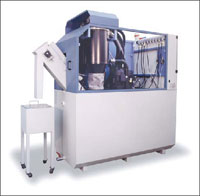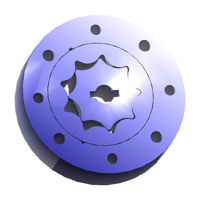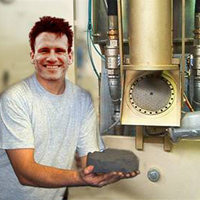Emulsion filtration systems
The following table shows the performances for the standard range of currently produced filtering systems.
EMULSION | ||||
|---|---|---|---|---|
Model |
EGS 200 |
EGS 400 |
EGS 800 |
EGS 1000 |
Nominal filtration degree |
5 ÷ 15 μm |
5 ÷ 15 μm |
5 ÷ 15 μm |
5 ÷ 15 μm |
Generation of clean lubricant and coolant fluid (L / min.) |
200 |
400 |
600 |
1000 |
Sludgeextraction capacity (Kg / hour) |
8 |
10 |
15 |
20 |
Filtering parts regeneration time |
30 seconds |
|||
Quantity of daily-tolerated extraneous oil (upon 10 working hours) |
1 Kg |
1 Kg |
1 Kg |
1 Kg |
If different uses are needed at the same time, it might be necessary to have the lubricant/coolant fluid filtered at different pressures (for instance, a jet for tool cleansing).
In this case, the equipment is set with additional booster pumps for the application.
HOW TO CHOOSE THE FILTRATION SYSTEM SUITING YOUR NECESSITIES
 An important element is the effective flow-rate of the lubricant/coolant fluid, necessary to the pertinent process. In order to establish this flow-rate (the exact measurement is not important, but the order of magnitude is), a measurement can be carried out by calculating the time is needed to fill a container with a known volumefrom the machine tool inlet. If more machine tools need to be connected, just repeat the operation and add the single flow-rates. The second project element is the filtering degree. It is very important to establish to what extent the filtration needs to be forced in terms of performances. An indication lower than the real necessity results in a greater surface roughness or a lower duration of the tool cut; an indication higher than the real necessity would not allow a complete use of PMPO filtration system capacity. Through the adjustment procedure, it is possible to obtain a solid waste of the filtered substance that is even lower than the average value of 5 micron, to which corresponds a lower capacity. Therefore, with identical system, a higher solid waste corresponds to a higher volume and a higher capacity to feed more applications.
An important element is the effective flow-rate of the lubricant/coolant fluid, necessary to the pertinent process. In order to establish this flow-rate (the exact measurement is not important, but the order of magnitude is), a measurement can be carried out by calculating the time is needed to fill a container with a known volumefrom the machine tool inlet. If more machine tools need to be connected, just repeat the operation and add the single flow-rates. The second project element is the filtering degree. It is very important to establish to what extent the filtration needs to be forced in terms of performances. An indication lower than the real necessity results in a greater surface roughness or a lower duration of the tool cut; an indication higher than the real necessity would not allow a complete use of PMPO filtration system capacity. Through the adjustment procedure, it is possible to obtain a solid waste of the filtered substance that is even lower than the average value of 5 micron, to which corresponds a lower capacity. Therefore, with identical system, a higher solid waste corresponds to a higher volume and a higher capacity to feed more applications.
Once the filtration parameter is fixed, it is however advisable to proportion the flow-rate with a safety degree that takes into account small errors regarding the filtration degree definition, also to compensate the possible necessity to attach additional machine tools. The third element is the quantity of extracted sludge in a fixed time unit. From the combination of these data , it is possible to establish the plant flow-rate; later, during the operation process, the selection of the parts (such as the filtering parts) and finally, in the start-up, the system parameter setting. By installing a PMPO system, most of the times a transformation occurs in the company: the cleaning procedures change, any maintenance works on tanks containing fungi and bacteria is abandoned, the resolution of technical and economical problems is achieved. This is the perfect solution for new sheds. In these cases, if the technical data are not measurable, the experience of the PMPO staff will help in an accurate estimation. PMPO has a specific laboratory to carry out the analysis of the lubricant/coolant fluids that need to be filtered, or that are already filtered. Thanks to this structure it is possible to send a sample of dirty lubricant/coolant fluid (ex. 1 liter) that needs to be filtrated and then receive the dirt particles’ measurements, as well as a filtration sample carried out by the PMPO systems. The analysis is provided in a clear and understandable format, reporting the actual dimension of dirt particles that have been found in the fluid, and the actual quantity associated to each dimensional class for which the analysis was carried out. It is also possible to obtain compliance with the ISO and NAS regulations; however, these regulations have been created for hydraulic systems. As a consequence, their results, if applied to the filtration of lubricant/coolant fluids of machine tools, might lead to misinterpretations.







